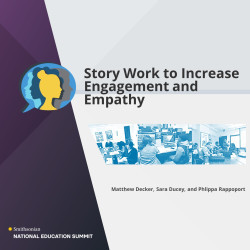Philippa Rappoport
I work in education and engagement, teacher professional development, and outreach at the Smithsonian Office of Educational Technology (OET), and have a particular interest in developing and producing trainings, programs, teaching techniques, and platforms that foster deep learning and contribute knowledge to improve practices in museum and preK-16 education and engagement. At OET over the last decade+, I created digital assets for schools, families, and new immigrant English Language learners to complement teacher professional development and pan-Smithsonian programming, including Learning Lab teaching collections, YouTube videos with tradition bearers, a handmade family stories book-making website, and online heritage tours.
Philippa Rappoport's collections
Digital Storytelling with Museum Objects in the Smithsonian Learning Lab (RDMF Conference Workshop)
 Philippa Rappoport
Philippa Rappoport
Personal Responses to Covid-19: A Digital Storytelling Workshop Using the Smithsonian Learning Lab
 Philippa Rappoport
Philippa Rappoport
Personal Responses to Covid-19: A Digital Storytelling Workshop Using the Smithsonian Learning Lab (for DC Public School educators)
 Philippa Rappoport
Philippa Rappoport



